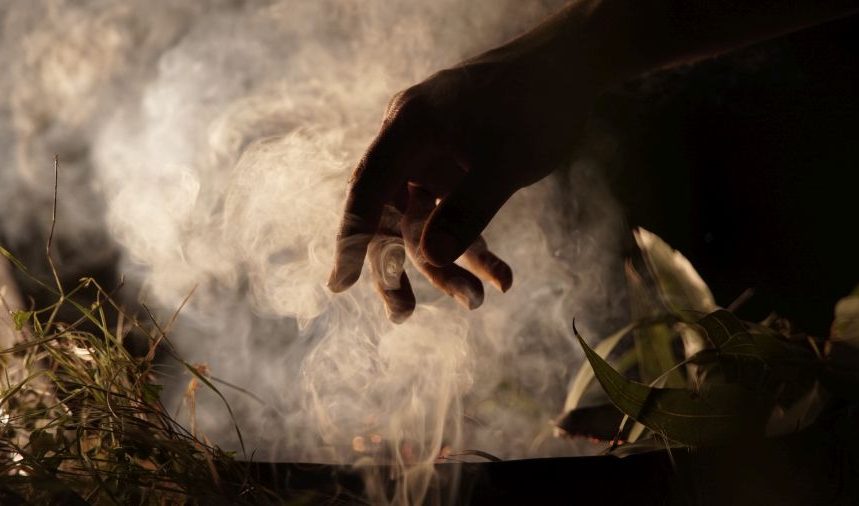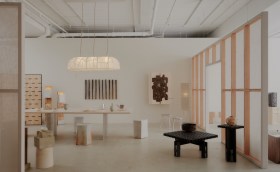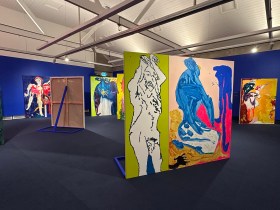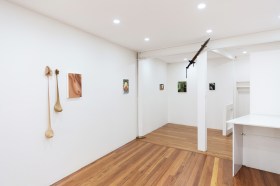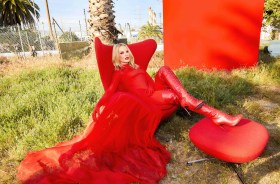As ideas around decolonising our views of the past gain greater prominence, museums’ role as bastions of these histories are coming under scrutiny.
In previous generations audiences may have looked to museums more as monoliths of information, but in contemporary contexts, this authoritative role is somewhat in flux.
As the Director of MOD. (Museum of Discovery) Dr Kristin Alford told ArtsHub in a recent interview, museums are places where multi-faceted dialogues can surface and multiple readings of collection materials can be achieved.
‘Yes, there needs to be that body of expertise and evidence that is held by the institution. But there are also ways for [museums] to invite other ways of knowing into the discussion of a topic,’ she said.
Clearly, conversations around ways to display museums’ collection materials that fairly reflect the peoples and voices connected to that content, have been circulating within the sector for some time.
But given the current political context, as the Labor Government signals its intentions to progress reforms called for in the 2017 Uluru Statement From The Heart – in particular around truth-telling – how might this affect the way museums present these past events?
What does truth-telling mean within museums’ walls?
Marlia Fatnowna and Sarah Cole are members of the WA Museum Boorla Bardip Learning and Engagement team. For several years, they have been working on programs designed to encourage new ways for visitors to explore the museum’s exhibition material, especially around First Nations content.
Fatnowna is a Wik woman from Far-North Queensland who joined the WA Museum Boorla Bardip team in 2017. She said that ever since, she’s observed the museum’s efforts to interrogate its legacy and think carefully about its approach to subjects like First Nations truth-telling and Indigenous history.
‘I was very keen to be involved in that work,’ Fatnowna told ArtsHub. ‘I could see there were some unresolved areas.’
Fatnowna explained that as part of the museum’s reviewing its approach to Indigenous Collection material, they wanted to ensure everyone was on the same page in their understanding of some key terms and concepts related to that content.
‘When it came to the term “truth-telling”, we put a lot of time and resources into consultations with the community, to see how people understood that,’ she told ArtsHub.
‘What came back, was that many people saw it as: “There’s a truth or a lie”.
‘But the deeper conversation around that is about perspectives,’ she continued. ‘It’s about asking: “Whose perspectives are dominant? Whose are reliable? Whose are suppressed?”’
An inquiry-based approach
WA Museum Boorla Bardip Learning and Engagement Officer Sarah Cole works closely with Fatnowna on the museum’s Learning programs, and cited their school tours as a good place to start to see the museum’s approaches to truth-telling in action.
‘The students are so switched on,’ Cole said, describing responses from visiting groups, who range in age from 8-17 years.
Cole explained the museum’s tours follow an inquiry-based framework which considers many aspects of visitors’ interactions with exhibition works in detail.
‘For example, for some of the more solemn and potentially confronting subject matter, we invite students to sit around the object and we introduce topics through the children’s observations and emotional responses, rather than standing in front and lecturing on it,’ she explained.
Encouraging students to analyse the language used to talk about museum exhibits is also a good way to initiate inquiry-based learning.
Read: 4 ways to drive institutional change
‘The work might be about the history of a particular [Indigenous] massacre,’ Cole said. ‘So, I might ask them to think about the word “battle” for instance, how it was once used to describe the event, and ask them to consider what that word implies.
‘Then, we would do the same sort of thinking around the word “massacre”,’ she continued.
‘That leads to questions about how words have been used to downplay atrocities, and why the story of that same event has been described in different ways, and why language is important in truth-telling.’
Inquiry-led questions are a good way to reframe colonial objects to do truth-telling work as well, Cole said.
‘They might be looking at a 19th century horse saddle from an Australian cattle station,’ she told ArtsHub.
‘We prompt them to think about that item from the perspective of not only the cattle station owners, but the Indigenous stockmen who also rode those horses – encouraging them to think about those people’s different connections with [the saddle].
‘Ultimately, it’s about laying the foundations [of knowledge] to encourage students’ awareness that multiple perspectives of history exist, and trying to do that in the most sensitive way we can,’ Cole said.
An immersive project uncovering hidden history
In 2021, Perth Festival presented what turned out to be a sold-out season of a walking tour performance written and created by WA artists Ian Wilkes (a Noongar man) and Poppy van Oorde-Grainger, with an oral history from the late Noongar Elder Doolann-Leisha Eatts.
Titled Galup, the work – originally commissioned by WA based arts organisation SPACED in 2018 – took audiences on a story-telling journey around a popular Perth lake-side park, which is also the site of Noongar massacre that occurred in 1830.
‘We wanted to make sure audiences were ready to hear about the terrible things that happened,’ van Oorde-Grainger said.
‘Ian [Wilkes] always says that just because bad things happened here, doesn’t make it a bad place – we want people to keep coming to the place, but to have a deeper respect for what happened here.’
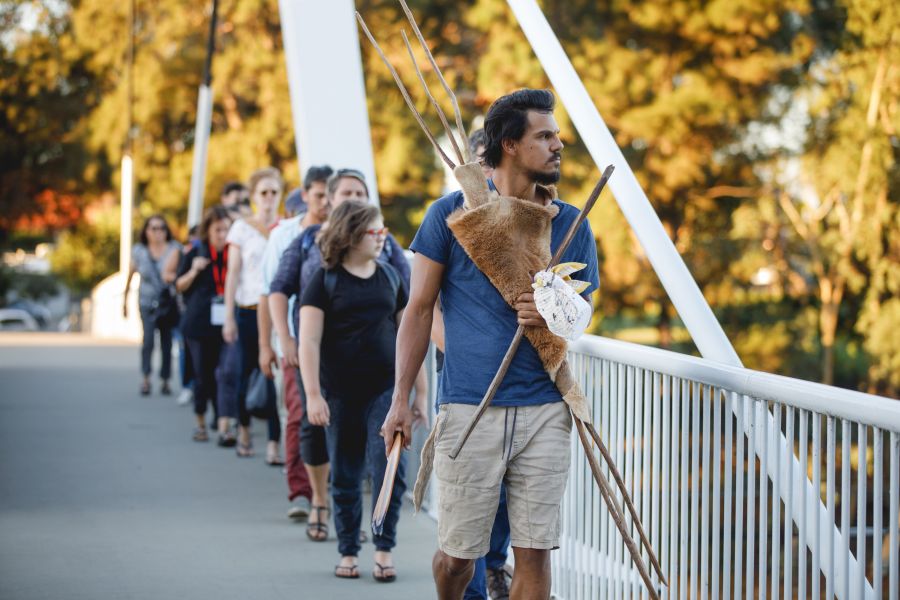
Galup’s co-creators have now teamed up with WA Museum Boorla Bardip to offer audiences a VR experience of the work, fusing immersive technology with oral histories to share this history with audiences in a new way.
Van Oorde-Grainger said the nine minute VR experience is highly cinematic, and, unlike the original live 90 minute performance, it focuses solely on the massacre story as told through the eyes of local Elder Doolann-Leisha Eatts, based on the way the story has been passed down through her family.
Marlia Fatnowna said these kinds of approaches to the presentation of history are also helping to re-frame the way audiences understand historical events.
‘It’s another reminder that narratives can come through from the communities who are personally connected to those items and experiences, rather than only curatorial and academic staff or those who have expertise in that area,’ she said.
Read: Indigenous Arts Criticism: Breaking the silence
Sarah Cole recounted a similar approach taken by the Sydney Jewish Museum which left a strong impression with her, and which she says has helped shaped her thinking around truth-telling in museum contexts.
‘It was about how to teach legacies of genocide, and we heard first person accounts from survivors of the Stolen Generation, the Rwandan genocide, the Cambodian genocide, and Jewish scholars of the Shoah.
‘These survivors were unanimous on one thing, that while the message is vital, the trauma should not be passed on, as much as possible.
‘So, they were trying to make us aware that it’s not about censorship, but it is about sensitivity,’ she said.
Galup VR is showing at WA Museum Boorla Bardip from 3-17 July, produced by Same Drum, presented by WA Museum in association with Perth Festival.

